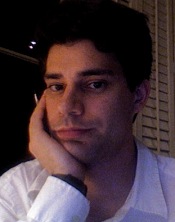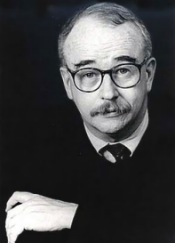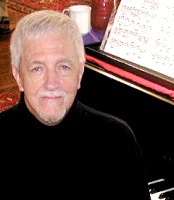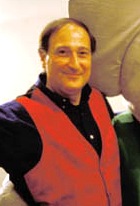 The Countdown continues.
The Countdown continues.
Samuel Vriezen. Composer. From The Netherlands.
Did you learn anything in music school? Or does the phrase “circle of fifths” mean nothing to you?
Louis Andriessen taught me to use a double barline whenever there is a tempo change. Later, though, I started writing pieces in which performers have gradual tempo changes independently of one another all the time, and I hardly use double barlines anymore.
What’s your favorite “bad” piece of music? And briefly justify your crappy taste.
Wish I had one! I actually think all of my favorite music is quite good. Or is it about something I’m not “supposed” to like, by some mysterious agency or other? What would the Taste Police arrest me for first – enjoying Beat It or enjoying the Carceri d’Invenzione cycle? How to answer this question? Suppose I enjoy humming The Internationale while taking a shower, would that be sufficiently problematic? Not that I do though, and anyway you guys just ousted the Republicans and voted for a candidate widely known to be a “socialist”. So it may be the mildly embarassing erotic poetry in Stimmung, which, as a whole, is a great piece of course. Or perhaps it could be a piece by John Adams, whom I’m not generally a fan of, except that the Grand Pianola Music does manage a level of banality that I find somehow impressive.
Your five-composition-long playlist for Schoenberg would contain:
Obviously, there’s only one thing you could want to say to Schoenberg, and that is “Hey, lighten up already!” and I guess I’d end up playing him Nancarrow or something. But really, there’s this American obsession with Schoenberg that I don’t quite share. When I was a student at The Hague, Schoenberg had at that school already become a kind of cartoon version of the model modernist – not an Oedipal father figure by a long shot anymore (actually, there’s a beautiful sculpture of him in the building where you have his profile hollowed out of a transparent slab of glass).
Instead, Dutch music life was at that time drenched in Stravinsky, particularly through Louis Andriessen’s and Elmer Schönberger’s depiction of him in their book, The Apollinian Clockwork – a great read, but at some point many of us were getting worried that irony, additive rhythm, variable ostinato, block forms and twisted stylistic paraphrase (‘reference’) had become mandatory. So I’m substituting Stravinsky for Schoenberg, I lock the old devil up in some dark CIA basement at a secret location in Eastern Europe, gag him – I mean we’re in a Taste Police mood in this here questionnaire anyway – and make him listen to:
Tom Johnson, The Chord Catalogue
Jürg Frey, 2nd String Quartet
Xenakis, Eonta
Cage, the Europeras
Stravinsky, Petrouchka
– absolutely fantastic pieces all – and we play some loud complex sine wave chord or other by La Monte Young between sessions, until he promises never to write the Octet again.
Congress calls on you to draw up a bailout plan for contemporary music! What do you do?
We stage performances of Cardew’s The Great Learning at the White House and make the Senate do a production of Cage’s Song Books. (Congress itself might be a good group for my piece Local Orchestra – click here.

 Rodney Lister
Rodney Lister First up:
First up:  My concert on the Interpretations Series on November 20th will mark the third time that I have presented my compositions on this prestigious series. These concerts have featured my works for flute and piano, vocal pieces for Thomas Buckner and the Yamaha Disklavier™ and keyboard works that combine the unique features of the Yamaha Disklavier™ as a concert piano and as a controller keyboard.
My concert on the Interpretations Series on November 20th will mark the third time that I have presented my compositions on this prestigious series. These concerts have featured my works for flute and piano, vocal pieces for Thomas Buckner and the Yamaha Disklavier™ and keyboard works that combine the unique features of the Yamaha Disklavier™ as a concert piano and as a controller keyboard. Thirteen Ways of Looking at a Black Bela
Thirteen Ways of Looking at a Black Bela
 Hi friends, I’m excited to announce that my new website is up and running! Please visit
Hi friends, I’m excited to announce that my new website is up and running! Please visit